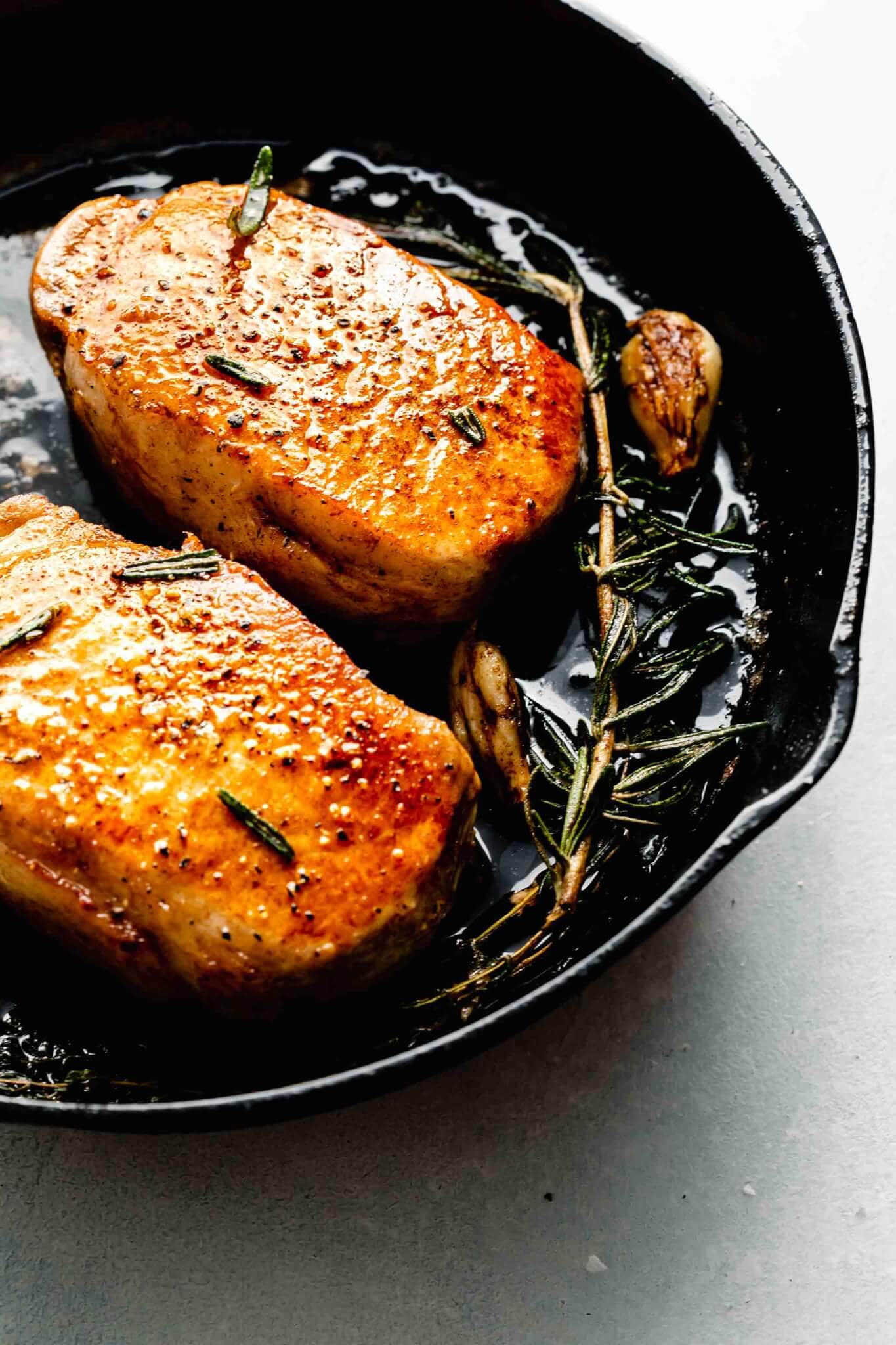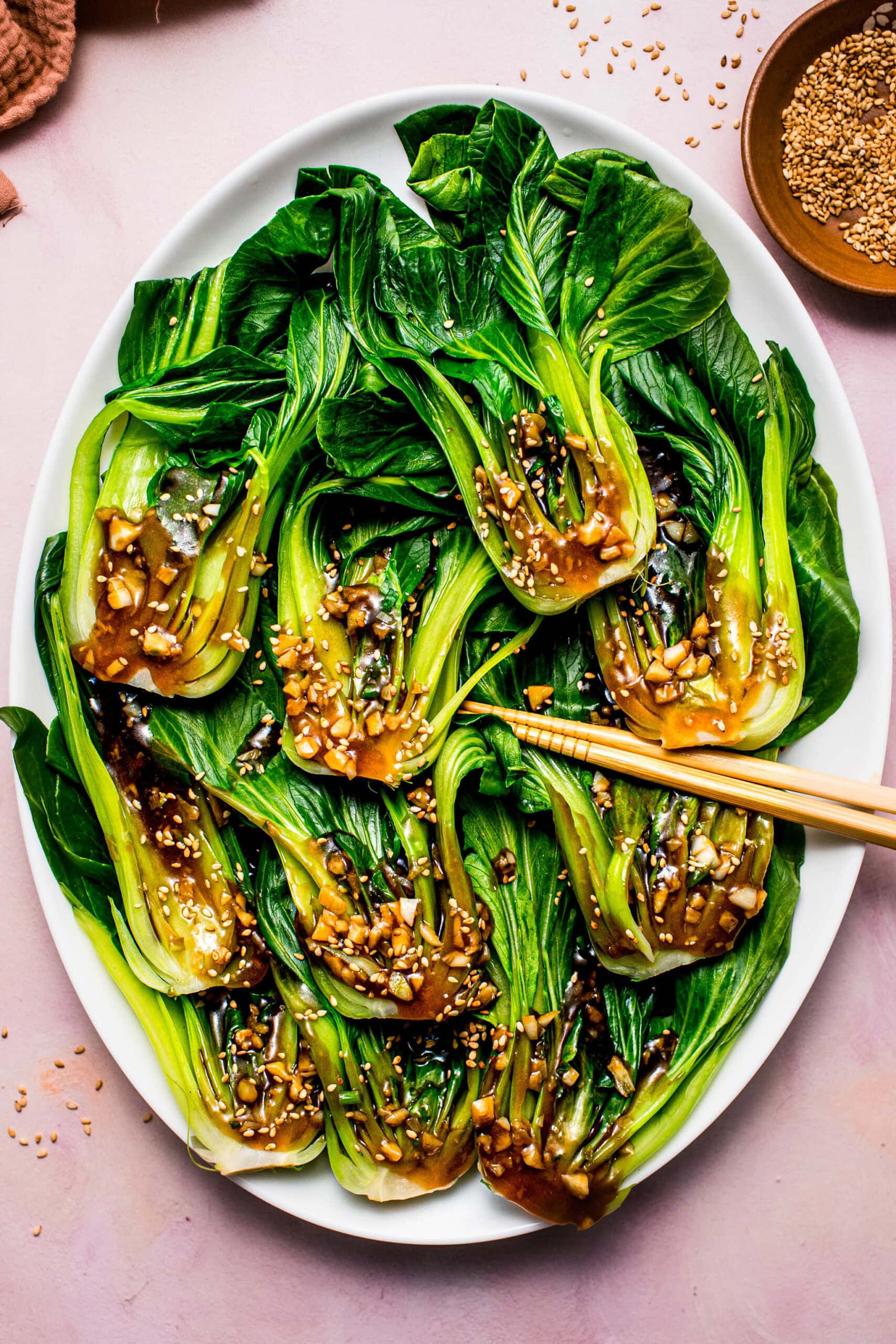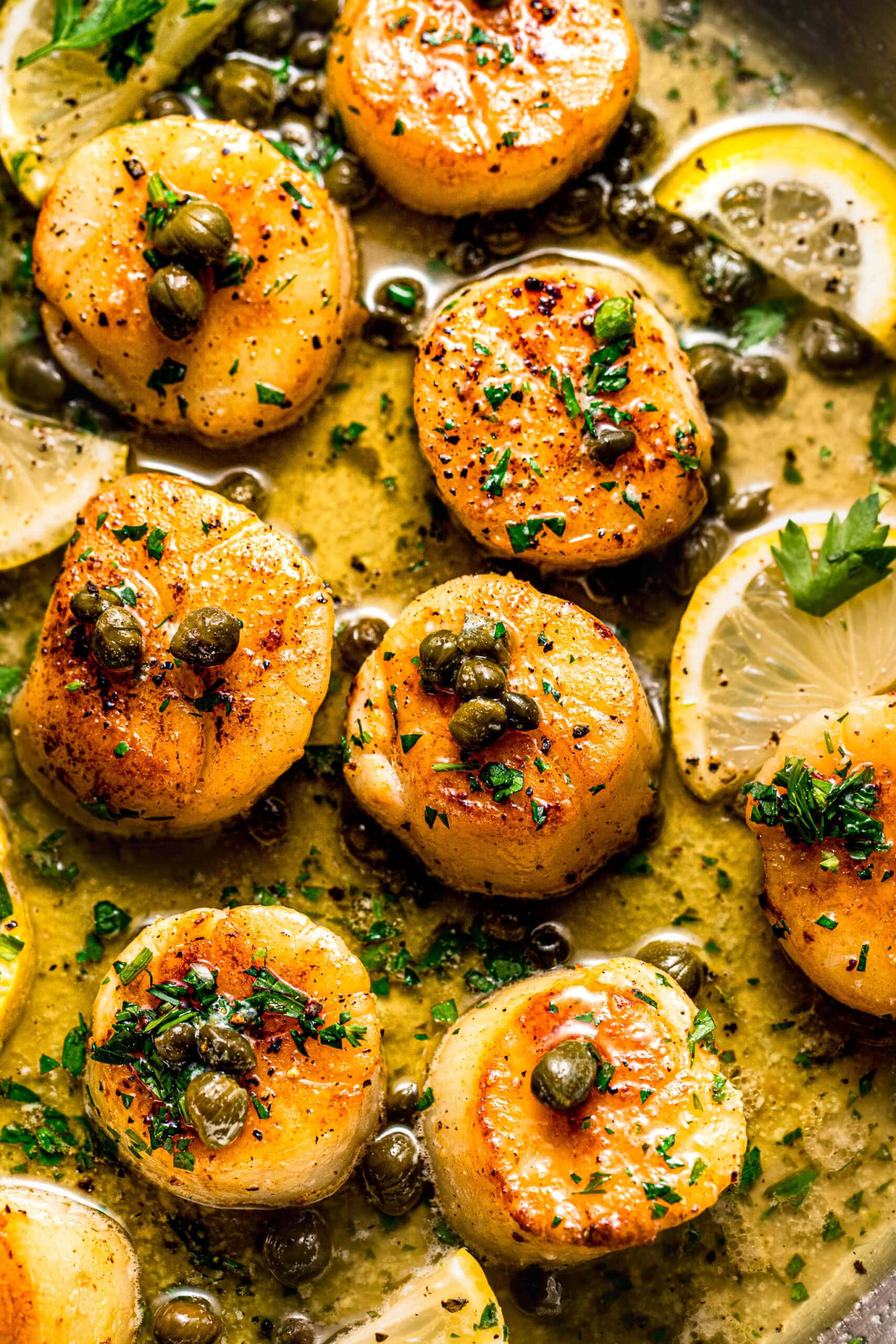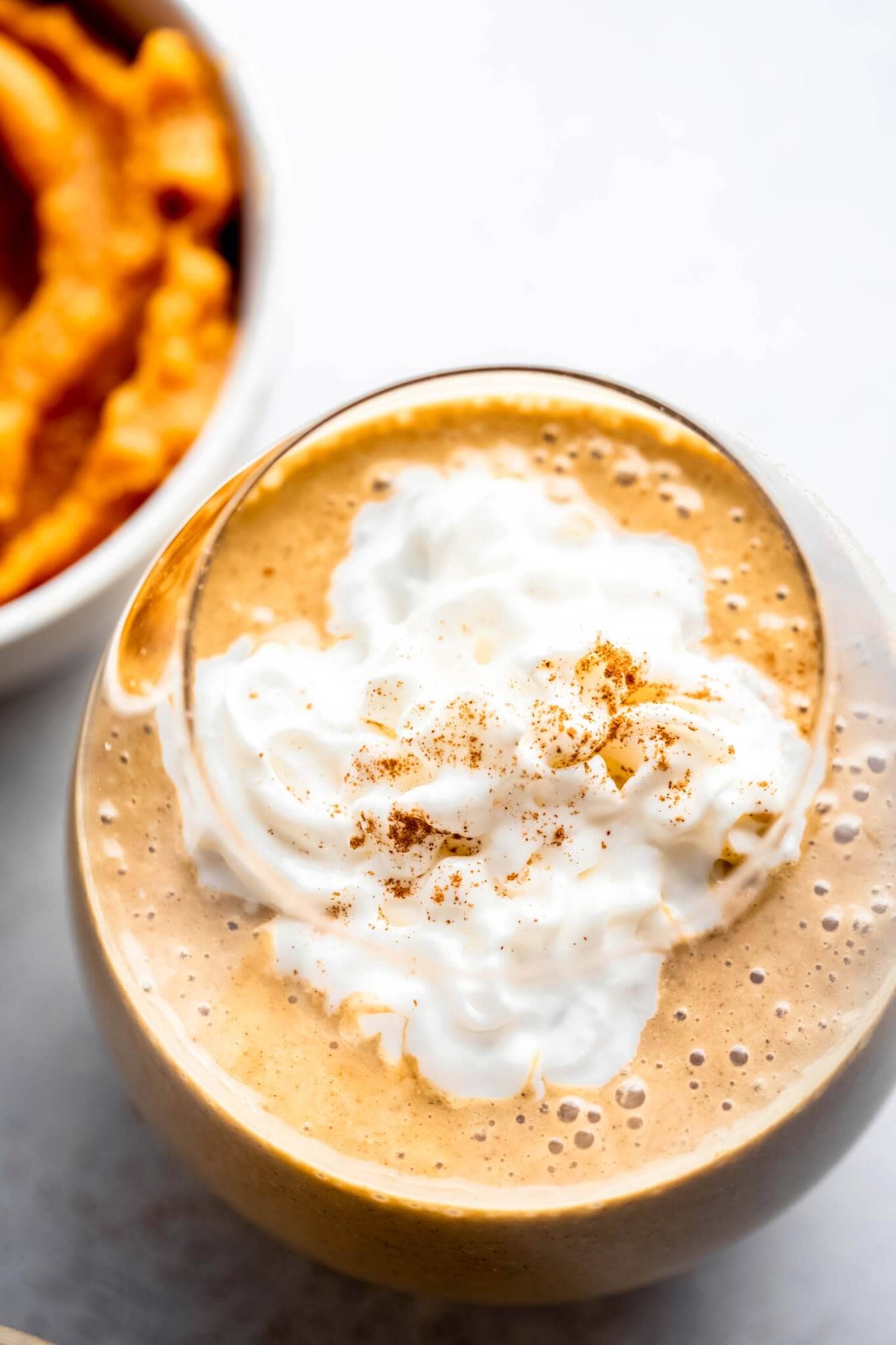Forget about overcooking your scallops because this recipe for Sous Vide Scallops is foolproof. Finished with a buttery lemon caper sauce, the tender and golden brown scallops are perfect for date nights, dinner parties, or just because!

Table of Contents
I totally understand that cooking scallops at home can feel intimidating, but trust me when I say that the sous vide method has your back. I’ve tested hundreds of sous vide recipes, and it’s easily one of my favorite cooking methods because it eliminates the risk of overcooking proteins. And yes, it even works with scallops, AKA the seafood known for going from tender to rubbery in seconds.
My Sous Vide Scallops recipe walks you through the entire easy process. Just vacuum-seal the scallops in a bag, drop them into the temperature-controlled water bath, then quickly sear them in a pan with butter at the end. It’s that simple!
To complement their silky texture and fresh flavor, I served the perfectly seared scallops with my favorite lemon caper sauce. Its mouthwatering buttery flavors and bright, citrusy zing instantly turn this into a restaurant-quality meal.

- Scallops – Opt for large, fresh sea scallops. They hold their shape well in the sous vide bath and develop a golden crust when seared. I don’t recommend using bay scallops here because they’re too small and delicate.
- Salt and pepper
- Lemon zest
- Butter – You need butter for searing the scallops and for the base of the lemon caper sauce. If you’re dairy-free, sear the scallops in olive oil and prepare the sauce with a vegan butter substitute.
- Lemon caper sauce – This is my go-to sauce for scallops! Made with nothing more than melted butter infused with capers, garlic, lemon juice, fresh parsley, and a pinch of salt, it’s rich, tangy, and just salty enough to balance the scallops’ natural sweetness.
How to make it

Step 1
Season and seal
- Preheat the water bath to 122°F.
- Meanwhile, pat the scallops dry and season them with salt, pepper, and lemon zest.
- Place the scallops in a single layer in a ziplock or FoodSaver bag. Use two bags if the scallops are crowded.
- Seal the bag tightly using a vacuum sealer. If using a ziplock bag, use the water displacement method (see ‘Tips & Tricks’).

Step 2
Sous vide
- Submerge the bag in the water bath, securing it with a clip or sous vide weight so it doesn’t block the circulator’s intake or output.
- Let the scallops cook for 30 minutes, then transfer them to a paper towel-lined plate and blot dry with more paper towels.

Step 3
Sear
- Melt the butter in a large nonstick skillet over medium-high heat.
- Add the scallops and sear until golden brown.
- Set the seared scallops aside on a plate while you prepare the sauce.

Step 4
Sauce and serve
- Melt the butter in a small skillet over low heat.
- Add the capers and minced garlic, and simmer just until fragrant, then remove the pan from the heat.
- Stir in the fresh lemon juice and chopped parsley. Taste and season with kosher salt, if needed.
- Spoon the lemon caper sauce over the seared scallops and enjoy!
Time-saving tip: You can prepare the lemon caper sauce 3 to 4 days in advance and store it in an airtight container in the fridge. When it’s time to use it, gently reheat it in a skillet over low heat, stirring constantly to restore its silkiness.
Tips and tricks
- The best temperature for sous vide scallops is 122°F. Some recipes go up to 125°F, but I find 122°F hits the firm yet silky sweet spot. No rubbery, overcooked scallops here!
- No fancy FoodSaver? Use the water displacement method. After placing the scallops in a heavy-duty ziplock freezer bag, slowly lower the bag into the sous vide bath, letting the water pressure naturally push the air out before sealing the bag just above the waterline.
- Yes, you can use sous vide frozen scallops—just defrost them first. In a pinch, you can place the sealed bag in a bowl of cold water for 30 to 45 minutes. However, the safest way to thaw scallops is in the fridge overnight.
- The scallops will be slightly damp after the sous vide bath. Since moisture is the enemy of searing, you’ll need to blot them fully dry with paper towels to achieve that restaurant-quality crust.
- The scallops are fully cooked after the water bath, which means you need to be careful not to overcook them during the final searing step. Once the melted butter is hot (but not smoking), add the scallops and only sear them for about 20 seconds per side. Flip once, and that’s it.
Serving suggestions
Scallops are a fantastic protein for everyday dinners and fancy date nights. They pair especially well with something starchy, like creamy risottos or pastas:
They also pair well with light and fresh dinner sides. These easy options are great when you want to keep the meal simple:
Don’t forget to check out these 40+ Easy Sides for Scallops while you’re here!
Storing
Once the leftover scallops are cool, transfer them to an airtight container and store them in the fridge for up to 2 days. I don’t recommend freezing cooked scallops because they won’t be as delicate and buttery after thawing.
The best way to reheat scallops is in a skillet over low heat. Melt a little butter in the pan, then sear each scallop for about 1 minute per side. This should be enough to take the chill off without overcooking. Avoid using the microwave if possible, as it tends to zap out the juiciness.

If you loved this sous vide recipe for lemon butter scallops, I would appreciate it so much if you would leave a ⭐️star review⭐️! Also, be sure to snap a picture of your finished dish and share it with me on Instagram using the hashtag #platingsandpairings and tagging me @platingsandpairings.
For more great Platings & Pairings recipes, be sure to follow me on Pinterest, Facebook, YouTube, Twitter, and TikTok.

Full Recipe
Sous Vide Scallops
Equipment
Ingredients
Scallops
- 1 pound sea scallops
- ½ teaspoon salt
- ¼ teaspoon black pepper
- Zest of 1 lemon
- 1 Tablespoon butter
Lemon Caper Sauce
- 4 Tablespoons unsalted butter
- 2 Tablespoons capers (drained)
- 1 clove garlic (grated or minced)
- 2 Tablespoons lemon juice
- 1 Tablespoon fresh parsley (minced)
- Kosher salt (to taste)
Instructions
Scallops
- Set sous vide to 122-degrees.
- Season scallops with salt, pepper and lemon zest.
- Place the scallops into a ziplock or FoodSaver bag in a single layer (you may need to use 2 bags).
- Seal using a vacuum sealer. Or, if using a ziplock bag, use the water displacement method.
- Place the bag in the water bath, making sure not to block the intake or output sections of the sous vide, and cook for 30 minutes.
- Remove scallops from the bag and place on a paper towel-lined plate. Pat it very dry with additional paper towels.
- Melt butter in a large nonstick skillet over medium-high heat. When the butter stops foaming, add the scallops and sear until golden brown on both sides, about 40 seconds total. Transfer to a plate and serve with lemon caper sauce if desired (below).
Lemon Caper Sauce
- In a small skillet, melt the butter over low heat.
- Once melted, add the capers and garlic. Bring to a simmer, and continue cooking until fragrant, about 1 minute.
- Remove from the heat and add the lemon juice and parsley. Season to taste with kosher salt. Nestle the sous vide scallops in the sauce and enjoy!
Notes
- Once the leftover scallops are cool, transfer them to an airtight container and store them in the fridge for up to 2 days. I don’t recommend freezing cooked scallops because they won’t be as delicate and buttery after thawing.
- The best way to reheat scallops is in a skillet over low heat. Melt a little butter in the pan, then sear each scallop for about 1 minute per side. This should be enough to take the chill off without overcooking. Avoid using the microwave if possible, as it tends to zap out the juiciness.
- The best temperature for sous vide scallops is 122°F. Some recipes go up to 125°F, but I find 122°F hits the firm yet silky sweet spot. No rubbery, overcooked scallops here!
- No fancy FoodSaver? Use the water displacement method. After placing the scallops in a heavy-duty ziplock freezer bag, slowly lower the bag into the sous vide bath, letting the water pressure naturally push the air out before sealing the bag just above the waterline.
- Yes, you can use sous vide frozen scallops—just defrost them first. In a pinch, you can place the sealed bag in a bowl of cold water for 30 to 45 minutes. However, the safest way to thaw scallops is in the fridge overnight.
- The scallops will be slightly damp after the sous vide bath. Since moisture is the enemy of searing, you’ll need to blot them fully dry with paper towels to achieve that restaurant-quality crust.
- The scallops are fully cooked after the water bath, which means you need to be careful not to overcook them during the final searing step. Once the melted butter is hot (but not smoking), add the scallops and only sear them for about 20 seconds per side. Flip once, and that’s it.
















Leave a Reply